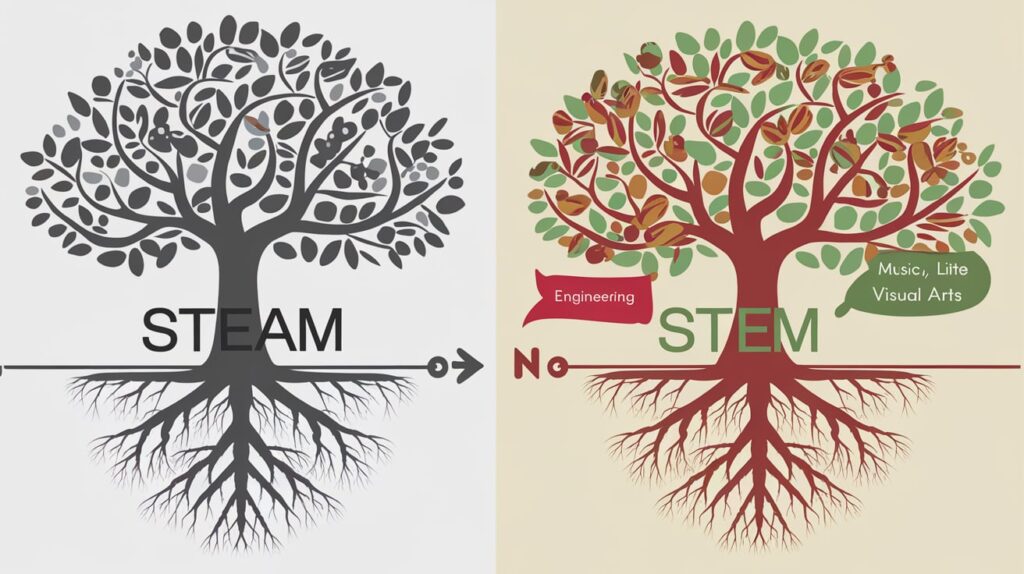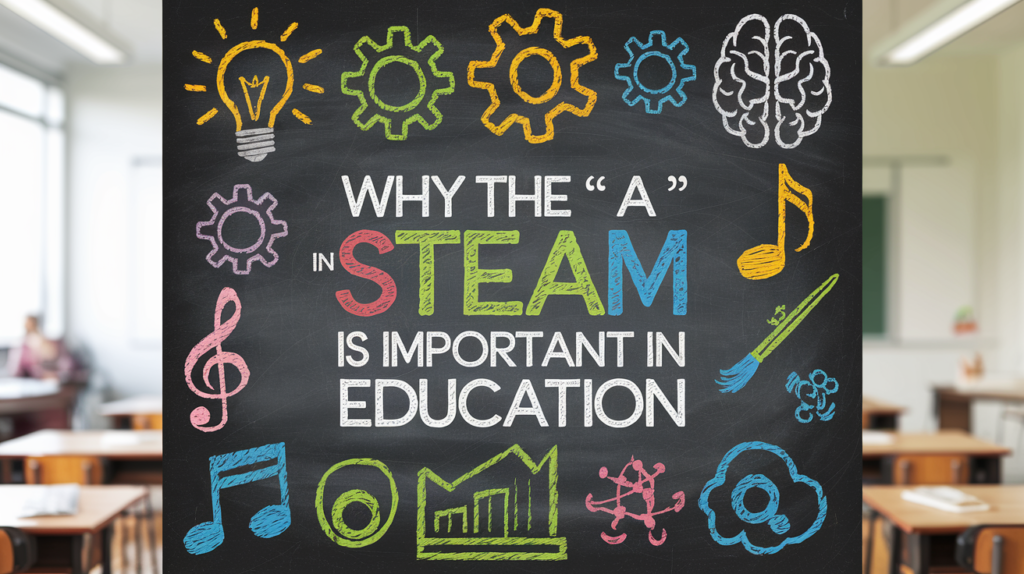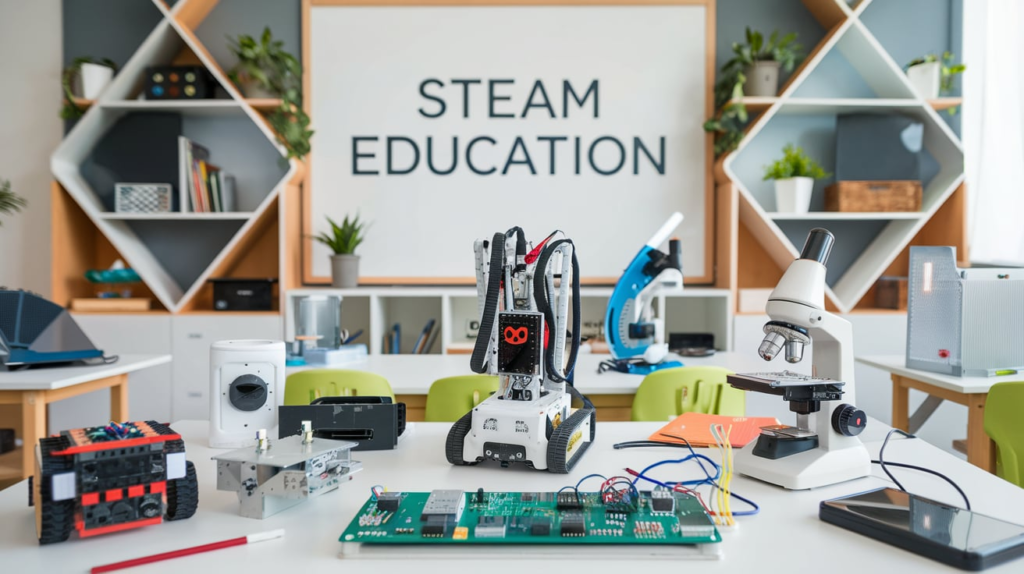Physical Address
304 North Cardinal St.
Dorchester Center, MA 02124
Physical Address
304 North Cardinal St.
Dorchester Center, MA 02124


As our world becomes increasingly driven by technology and innovation, the demand for education that prepares students for future challenges has grown. What is STEAM education and why is it important? This question arises frequently as educators and policymakers look for ways to cultivate the next generation of innovators, critical thinkers, and problem-solvers. STEAM education is an interdisciplinary learning approach that combines science, technology, engineering, arts, and mathematics to foster a comprehensive understanding of real-world problems. It encourages students not just to focus on technical skills but also to enhance their creativity, collaboration, and critical thinking abilities.
In this comprehensive article, we will dive into the meaning of STEAM, its importance in modern education, how it differs from STEM, and why arts are a crucial part of the equation. We will also cover how students and educators can specialize in STEAM, explore the future of education through the STEAM lens, and provide practical advice for implementing STEAM in schools and communities.

STEAM education refers to a holistic learning model that integrates science, technology, engineering, arts, and mathematics. It aims to inspire innovation by blending these five critical disciplines, emphasizing that they are interconnected rather than separate fields. The primary goal of STEAM is to prepare students for an increasingly complex and rapidly changing world by encouraging them to solve problems creatively and collaboratively.
Unlike traditional education, which often isolates subjects into silos, STEAM focuses on project-based learning that encourages students to explore how these disciplines overlap. For example, designing a robot (engineering and technology) may also involve learning about geometry (math), discussing aesthetics (art), and understanding environmental impact (science).
The arts component in STEAM education is key, as it fosters creativity, imagination, and innovation. Whether it’s design thinking, visual arts, music, or creative writing, the “A” in STEAM teaches students to think outside the box and approach problems from different angles.

What is STEAM education and why is it important to modern society? STEAM is vital because it equips students with the skills they need to thrive in a fast-paced, tech-driven world. It encourages the development of both technical and soft skills that are crucial for problem-solving, collaboration, and adaptability.
Here are several reasons why STEAM education is essential:

It’s essential to understand the distinction between STEAM and STEM. STEM stands for science, technology, engineering, and mathematics. Like STEAM, STEM focuses on integrating these disciplines to create a more comprehensive learning experience. However, the key difference lies in the inclusion of the arts in STEAM.
STEM is primarily concerned with developing technical skills needed for scientific and engineering careers. It emphasizes logical thinking, problem-solving, and the application of mathematical and scientific concepts. STEAM, on the other hand, integrates the arts to promote creativity and innovation alongside these technical skills. The “A” in STEAM stands for arts and includes fields such as design, music, visual arts, and creative writing, which foster a more holistic and well-rounded educational experience.
While STEM focuses on preparing students for specific technical careers, STEAM aims to develop a broader range of skills that can be applied to various industries. In today’s innovation-driven world, the ability to think creatively and integrate multiple disciplines is just as important as technical knowledge.

The inclusion of the arts in STEAM has sparked much debate, with critics arguing that arts should not be included in a framework that emphasizes science and technology. However, the arts are vital in STEAM education because they encourage creativity, innovation, and critical thinking—skills that are essential in virtually all professions.
Here’s why the “A” in STEAM matters:
Specializing in STEAM education opens doors to numerous careers that require a blend of technical skills, creativity, and innovation. Whether you are a student, educator, or professional, developing expertise in STEAM can enhance your ability to solve problems and collaborate across various disciplines.
Here are steps to specialize in STEAM:
For educators looking to integrate STEAM into their teaching, certification programs provide valuable tools and strategies. These programs often focus on the practical application of STEAM concepts, encouraging teachers to develop interdisciplinary projects and hands-on learning experiences for their students.
Some common topics covered in STEAM certification courses include:

There are numerous resources available for educators, parents, and students interested in STEAM education. These resources include lesson plans, project ideas, and tools that help integrate STEAM into the classroom or at home.
Some of the top STEAM education resources include:

STEAM education emphasizes both the process and the product of learning. The process refers to engaging students in creative thinking, problem-solving, and hands-on experimentation, while the product involves the tangible outcomes of their efforts.
What is STEAM education and why is it important for the future of education? In today’s digital and rapidly evolving world, the jobs of tomorrow will require a workforce capable of blending technical knowledge with creativity and problem-solving. STEAM education prepares students for this reality by teaching them how to navigate a world that requires interdisciplinary thinking.
STEAM is crucial to the future of education because:

STEAM education connects students with their community by encouraging them to solve local problems through creative projects. Many STEAM programs partner with local businesses, non-profits, and organizations to provide students with real-world experience.
Through community-based STEAM projects, students gain hands-on experience and see the practical
applications of their learning. This helps foster a sense of responsibility and engagement in their community, preparing them to contribute meaningfully in the future.

Implementing STEAM education in schools requires a thoughtful and strategic approach. Here are steps educators can take to introduce STEAM effectively:
STEAM education promotes engaged learning by encouraging students to apply their knowledge in meaningful ways. Project-based learning is central to STEAM, where students work on real-world problems and see the impact of their learning.
Through STEAM, students are motivated to explore their interests and passions while gaining practical skills. This engagement leads to better retention of knowledge and helps students develop the critical thinking skills they’ll need for the future.
As industries evolve and new technologies emerge, STEAM education is critical to preparing students for the challenges ahead. The integration of arts into STEM subjects encourages a more holistic approach to problem-solving, fostering the creativity and innovation that will drive the future workforce.

Despite the growing demand for STEAM professionals, many students are hesitant to pursue careers in these fields. This reluctance may stem from a lack of awareness about STEAM careers, limited access to STEAM education, or misconceptions about the difficulty of working in these fields.
By promoting the benefits of STEAM education and providing students with opportunities to explore STEAM-related careers, educators and policymakers can encourage more students to pursue these paths.
One of the most significant benefits of STEAM education is its ability to develop critical thinking skills. By engaging students in interdisciplinary projects, STEAM teaches them to approach problems creatively and analytically. This prepares them for a wide range of careers and equips them with the skills they need to succeed in the modern world.
In conclusion, what is STEAM education and why is it important? It is an innovative approach to learning that blends science, technology, engineering, arts, and mathematics. STEAM equips students with the critical thinking, creativity, and collaboration skills they need to succeed in the 21st-century workforce. As the world becomes more interconnected and complex, STEAM education offers a path forward for students, educators, and communities.